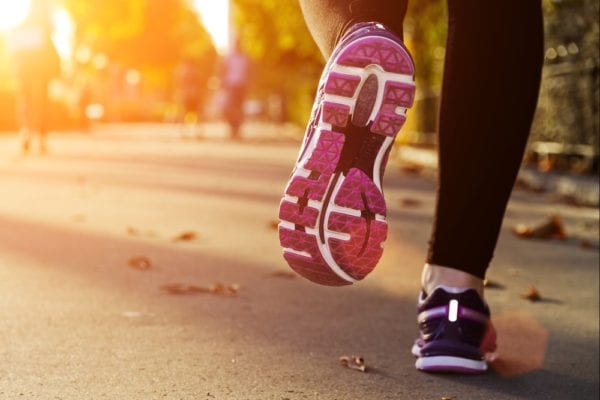
Many pharmacies, supermarkets, and health stores carry a wide variety of products to place inside of shoes for extra comfort and cushioning. These include gel inserts, insoles, pads, and targeted cushions that can be worn with a wide variety of shoes. Foot support can be taken a step further by ordering custom-made orthotics from a physician. For active individuals, gel inserts are commonly used in athletic shoes to replace or supplement the thin shoe lining that is provided by the manufacturer.
However, the research has been mixed as to whether these types of shoe products can actually protect someone from developing joint issues later in life. So, here is some information about whether gel shoe pads can able to help alleviate and prevent the symptoms of joint pain and arthritis.
What Gel Inserts Do
The purpose of the gel in a shoe insert is to add extra cushioning to prevent the foot and toes from rubbing up against a shoe in a painful way. Certain insert products also claim to help correct high arches, low arches and soothe painful foot conditions like plantar fasciitis.1,2,3
By using gel or soft foam materials, insoles may help with shock absorption as well. They are favored by people who work long hours on their feet or stand for long periods of time throughout the day.
Gel Pads and Knee Pain
But despite all of these promising benefits, studies have shown that insoles are not effective in treating or preventing knee pain associated with osteoarthritis.4,5 One particular study investigated lateral wedge insoles designed for knee osteoarthritis that affects the inner region of the knee.5 Hundreds of participants were asked to try the insoles and a vast majority did not report a significant decrease in their pain. However, everyone’s knee pain is different and some types could stand to benefit from customized insoles.
Gel Cushions and Foot Pain
While shoe inserts have not proven to be overly effective in reducing or preventing knee pain and arthritis, they can be very effective in making the feet more comfortable.1 Foot pain is very common among patients with both osteoarthritis and rheumatoid arthritis.6,7,8 It is advised to have customized shoe inserts made so that they conform to the shape of one’s foot and correct the foot issue without creating a new one. Based on a Cochrane Review, custom-made orthotics were found to reduce foot pain in people with juvenile idiopathic arthritis as well.9 However, it should be noted at custom inserts often cost well in the hundreds of dollars and are not always covered by insurance.
Solutions for Athletic Shoes
The most important thing to remember when choosing a new pair of athletic shoes is to find ones that fit very well without the need for many modifications.10 Certain insole brands have over-the-counter products specifically designed for arthritis sufferers, and these may be worth trying. For foot and knee pain that is not resolved by using shoe inserts, it may help to massage a pain relief cream like JointFlex on the site of pain after wearing shoes all day. Unfortunately, wearing insoles is not a quick fix for arthritis pain, but they may be worth a try alongside other pain relief and preventative measures.
REFERENCES for GEL SHOE INSERTS for JOINT and ARTHRITIS
1. Delzell, E. Feet hurt? Slip in some relief with shoe inserts. Arthritis Foundation. Retrieved October 22, 2018 from https://www.arthritis.org/living-with-arthritis/pain-management/joint-protection/foot-pain-shoe-inserts.php.
2. Plantar fasciitis. MedlinePlus. Retrieved October 22, 2018 from https://medlineplus.gov/ency/article/007021.htm.
3. Plantar fasciitis. American Orthopaedic Foot & Ankle Society. Retrieved October 22, 2018 from http://www.aofas.org/footcaremd/conditions/ailments-of-the-heel/pages/plantar-fasciitis.aspx.
4. Watson, S. (2013 August 21). Insoles no help for knee osteoarthritis. Harvard Health Publishing. Retrieved October 22, 2018 from https://www.health.harvard.edu/blog/insoles-no-help-for-knee-osteoarthritis-201308216629.
5. Parkes, M. J., Maricar, N., & Lunt, M. (2013 August). Lateral wedge insoles as a conservative treatment for pain in patients with medial knee osteoarthritis. JAMA, 310, 722-730. Retrieved October 22, 2018 from https://jamanetwork.com/journals/jama/fullarticle/1730513.
6. Arthritis & diseases that affect the foot. Arthritis Foundation. Retrieved October 22, 2018 from https://www.arthritis.org/about-arthritis/where-it-hurts/foot-heel-and-toe-pain/causes/foot-diseases.php.
7. Kontzias, A. (2017 July). Rheumatoid Arthritis (RA). The Merck Manual: Consumer Version. Retrieved October 19, 2018 from https://www.merckmanuals.com/home/bone,-joint,-and-muscle-disorders/joint-disorders/rheumatoid-arthritis-ra.
8. Kontzias, A. (2017 July). Osteoarthritis (OA). Retrieved October 19, 2018 from https://www.merckmanuals.com/home/bone,-joint,-and-muscle-disorders/joint-disorders/osteoarthritis-oa.
9. Hawke, F., Burns, J., Radford, J. A., & Du Toit, V. (2008 July 16). Custom‐made foot orthoses for the treatment of foot pain. Cochrane Database of Systematic Reviews. Retrieved October 22, 2018 from https://www.cochranelibrary.com/cdsr/doi/10.1002/14651858.CD006801.pub2/abstract.
10. Find the best and worst shoes for arthritis. Arthritis Foundation. Retrieved October 22, 2018 from http://blog.arthritis.org/living-with-arthritis/shoes-for-arthritis/.
